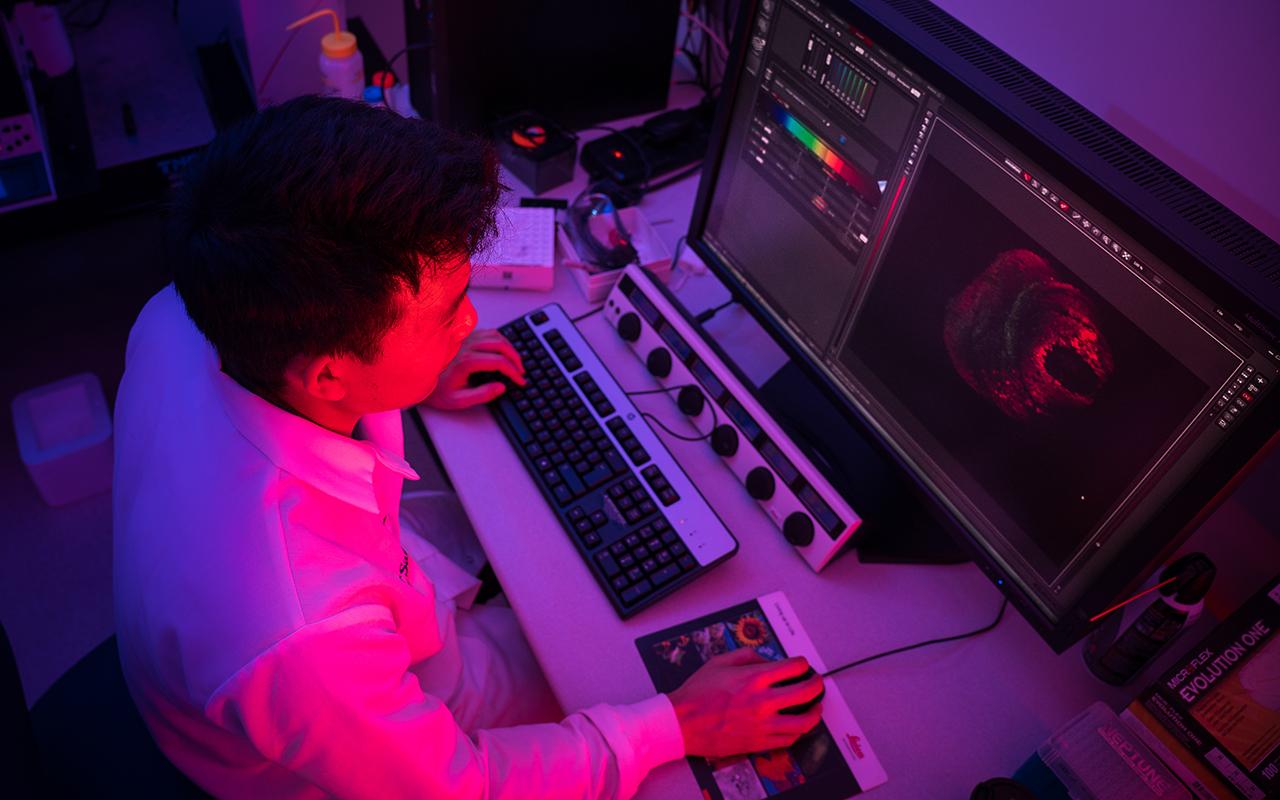Imagine a world where sickness becomes an antiquated notion, where cutting-edge advancements unravel the secrets of our biology, and where the boundary between man and machine blurs into a tapestry of unimaginable wonders. Welcome, dear reader, to the enthralling realm of bioengineering breakthroughs that promise to revolutionize the landscape of medical technology. As we embark on this awe-inspiring journey, we shall explore the frontiers of scientific innovation, where scientists, engineers, and dreamers come together to shape a future that holds the promise of a healthier, more resilient humanity. Brace yourselves, for we are about to dive headfirst into the realm of miracles that lie at the nexus of biology, engineering, and our collective human imagination.
Revolutionizing Patient Care: Groundbreaking Bioengineering Innovations
Welcome to a world where science and technology unite to transform healthcare as we know it. Bioengineering breakthroughs are rapidly shaping the future of medical technology, bringing unprecedented advancements that revolutionize patient care. With groundbreaking innovations at the forefront, new possibilities arise, promising to enhance diagnoses, treatments, and overall quality of life for individuals around the globe.
Through the fusion of biology, engineering, and medicine, bioengineering has paved the way for remarkable advancements in various fields. From cutting-edge prosthetics that restore limb functionality to targeted drug delivery systems that precisely release medication, the applications of bioengineering are diverse and far-reaching. By combining meticulous scientific research, engineering principles, and advanced technology, these innovations aim to tackle complex medical challenges, pushing the boundaries of what is possible.
To illustrate the immense impact of these bioengineering breakthroughs, let’s explore some outstanding examples:
- Regenerative Medicine: Groundbreaking advancements in tissue engineering and stem cell research have the potential to completely transform organ transplantation, offering hope to millions of patients awaiting donor organs. Using bioengineered organs, scientists have successfully grown functional tissues and even whole organs, paving the way for personalized transplants.
- Bioelectronic Implants: These innovative devices combine the precision of engineering with the intricacy of biology. From cochlear implants that restore hearing to neural stimulators that alleviate the symptoms of neurological disorders, bioelectronic implants have become a game-changer in improving the quality of life for many individuals.
- Artificial Intelligence in Medical Diagnosis: Harnessing the power of machine learning and data analysis, artificial intelligence has the potential to revolutionize medical diagnostics. By processing vast amounts of patient data and identifying patterns, AI algorithms can aid in early detection of diseases, leading to timely interventions and improved prognoses.
The future of medical technology is being shaped by these breathtaking bioengineering innovations, bringing hope, improved treatments, and ultimately transforming the way we approach patient care. As science continues to push boundaries and explore new horizons, the possibilities for further advancements seem endless. Stay tuned as we dive deeper into the world of bioengineering and witness the incredible transformations that lie ahead.

Unveiling the Untapped Potential: A Look into Cutting-Edge Medical Technologies
In the rapidly evolving field of medical technology, bioengineering breakthroughs have taken center stage, promising a future full of exciting possibilities. From advanced prosthetics to personalized medicine, these cutting-edge innovations are poised to revolutionize the way we approach healthcare.
One groundbreaking development is the advent of 3D printing in the medical field. This technology allows for the creation of customized implants and prosthetics, tailored to match an individual’s unique anatomy. With the ability to print intricate and complex designs, 3D printing opens up a world of new opportunities for patients in need of implants, such as dental crowns or hip replacements.
Another exciting advancement is the integration of artificial intelligence (AI) in various aspects of healthcare. AI-powered algorithms can analyze vast amounts of patient data, assisting in the diagnosis and treatment of diseases. This has the potential to lead to more accurate and timely diagnoses, as well as personalized treatment plans. Furthermore, AI can enhance the efficiency of robotic surgery, allowing for precise and minimally invasive procedures.
Innovative and forward-thinking, bioengineering breakthroughs are illuminating the untapped potential of medical technology. As researchers and engineers continue to push boundaries, the future of healthcare looks brighter than ever before. With the rapid pace of development, we can only imagine the countless ways in which these advancements will transform the lives of individuals and pave the way for a healthier society as a whole.
Enhancing Diagnosis and Treatment: Key Recommendations for Integrating Bioengineering Breakthroughs
Advancements in bioengineering have revolutionized the medical field, offering endless possibilities for enhancing the diagnosis and treatment of various conditions. Integrating these breakthroughs into clinical practice can lead to improved patient outcomes and revolutionize the future of medical technology. In order to leverage the potential of bioengineering, a set of key recommendations has been identified to help healthcare professionals seamlessly integrate these innovations into their everyday practice.
Collaboration and Interdisciplinary Approach: One of the key recommendations is to foster collaboration among bioengineers, clinicians, and researchers. By bringing together experts from different disciplines, we can foster a creative exchange of ideas and develop innovative solutions to complex healthcare challenges. This approach can lead to faster translation of bioengineering breakthroughs from the lab to the clinic, ensuring timely access to cutting-edge diagnostic tools and treatment options.
Investment in Research and Development: To fully capitalize on the potential of bioengineering, increased investment in research and development is crucial. With adequate funding, scientists and engineers can further explore the possibilities of bioengineering and develop novel technologies that can revolutionize the diagnosis and treatment of diseases. This investment will not only drive innovation but also pave the way for the commercialization of these breakthroughs, making them accessible to a wider population.
| Key Recommendations for Integrating Bioengineering Breakthroughs | Action Steps |
|---|---|
| Promote interdisciplinary collaboration | Establish collaborative research networks, organize conferences and workshops |
| Invest in research and development | Increase funding for bioengineering research and development initiatives |
| Create regulatory frameworks | Develop guidelines and regulations to ensure the safe adoption of bioengineering breakthroughs |
Creating Regulatory Frameworks: To ensure the safe and ethical integration of bioengineering breakthroughs, it is essential to establish robust regulatory frameworks. This involves developing guidelines and regulations that address concerns related to safety, efficacy, and ethical implications. These frameworks will help streamline the regulatory approval process, enabling healthcare providers to adopt these innovations with confidence.
By embracing a collaborative and interdisciplinary approach, investing in research and development, and implementing comprehensive regulatory frameworks, the future of medical technology can be propelled forward. Integrating bioengineering breakthroughs into clinical practice holds immense potential for transforming healthcare, enhancing diagnosis, and revolutionizing treatment options, ultimately improving patient outcomes and shaping the future of medicine.

Empowering the Future: The Promising Role of Bioengineering in Medicine
Medical technology has always been at the forefront of innovation, constantly pushing the boundaries of what is possible. One field that holds immense promise for the future is bioengineering. By merging biology and engineering, bioengineering has the potential to revolutionize the way we approach healthcare. From cutting-edge implants to futuristic gene therapies, here are some of the breakthroughs in bioengineering that are set to shape the future of medical technology.
Implantable Devices
One of the most exciting areas of bioengineering in medicine is the development of implantable devices. These small, technologically advanced devices are designed to mimic and enhance the function of our natural organs. For instance, pacemakers, which use electrical pulses to regulate the heartbeat, have been around for decades. However, recent advancements have allowed for the creation of more sophisticated implants, such as artificial organs that can restore lost functionality. With further research and development, bioengineers aim to create implants that are customizable to each patient’s unique needs, drastically improving both the quality of life and longevity.
Gene Therapies
Another area where bioengineering shows immense promise is in the field of gene therapies. Gene therapies have the potential to treat and even cure genetic disorders by modifying or replacing faulty genes. With the use of bioengineering techniques, researchers can develop innovative delivery systems, such as viral vectors, to introduce corrected genes into a patient’s cells. This approach holds incredible potential for diseases that have been historically difficult to treat, such as muscular dystrophy and cystic fibrosis. As advancements in bioengineering continue, gene therapies are expected to become more accessible and effective, offering hope to countless individuals and families affected by genetic conditions.
As we unveil the final thread in the tapestry of bioengineering breakthroughs, we are left in awe of the endless possibilities that lie ahead. The future of medical technology seems to have come alive, merging science and imagination to reshape the boundaries of human health. From bioengineered organs to cutting-edge diagnostics, the marvels of modern medicine are poised to rewrite the script of human well-being.
In this exploration, we have witnessed the tenacity of scientists and engineers who strive to bridge the gap between what was once deemed impossible and our newfound reality. The seeds of curiosity they have sown have grown into paths that lead us to a future where diseases once incurable may succumb to the ingenuity of mankind. With every groundbreaking discovery and each innovative invention, we inch closer to a world where ailments are tamed, lives are restored, and suffering becomes a chapter left behind.
Yet, as we navigate the uncharted realms of progress, we must remain grounded in the knowledge that technology alone cannot unlock the secrets of a brighter tomorrow. The ethical implications embedded within these advancements demand our unwavering attention. For every step we take closer to scientific triumphs, we must tread cautiously, ensuring that humanity always holds the reins of control, guiding the course of development towards benevolent ends.
With our minds focused on the horizon, we recognize the transformative power of bioengineering, reaching far beyond the realms of medicine. As we push the boundaries of our understanding, we can envision a future where bionic limbs restore freedom, where regenerative medicine mends broken hearts, and where genetic engineering embarks on a quest to eradicate inherited illnesses forever.
As we bid adieu to this enlightening journey, we are left with hope and anticipation. The wonders of bioengineering ignite a beacon of promise, casting light on a future where medical technology will span the realms of science fiction, permeating every realm of human existence. Embracing this potential, we stand poised on the precipice of a new era, one where human ingenuity unlocks the secrets of our own biology, paving the way for unparalleled triumphs and a healthier, brighter world for all.




